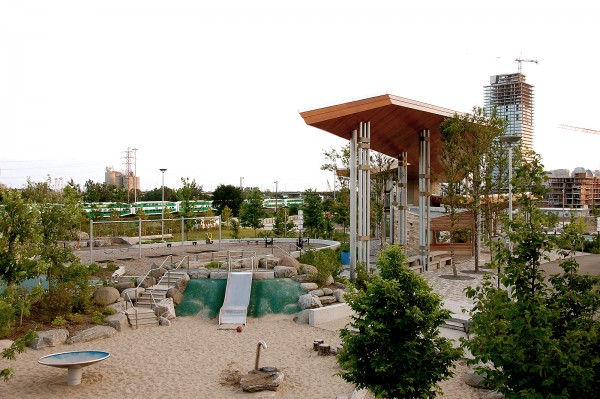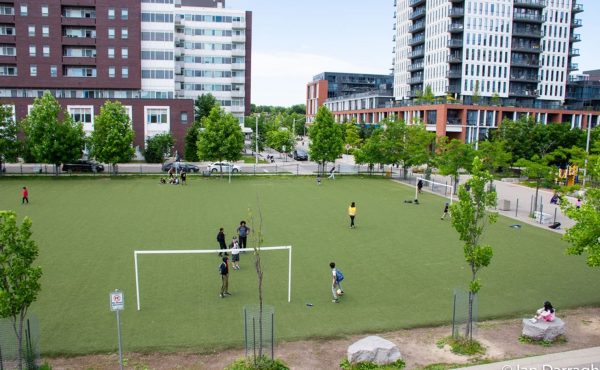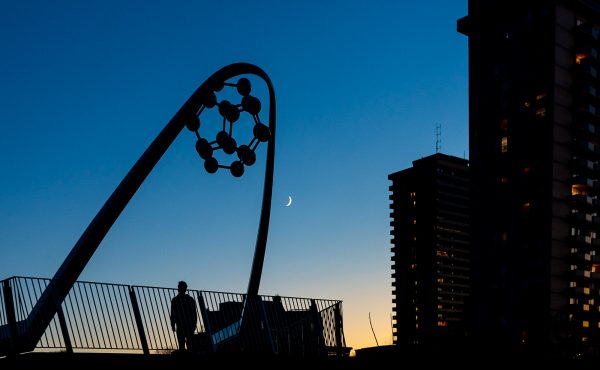In May 2014, council gave the city’s planning team the green light to embark on a three-year planning exercise, branded TOCore, that’s meant to figure out how Toronto should manage the stunning growth in the downtown, defined by the area between the Don River and Bathurst, and the lake’s edge to a ragged line running along the Rosedale Valley Road and the midtown CP rail corridor).
To no one’s surprise, the overview report notes the steady growth in jobs, households, and population in this area since the mid-1970s, and then poses a pivotal question that should have been addressed before the development horse bolted: “How can infrastructure and growth be better managed and coordinated?”
With parks and public spaces as one of the TOCore’s focus areas, city officials claim that Parks, Forest and Recreation staff are “exploring new approaches” to the acquisition, design and upkeep of downtown parks. The TOCore report further states that “acquisition” is a “priority” in much of the core. But planning officials promptly throw cold water on the notion that the city can purchase land downtown, noting that the funds allocated to such investments are insufficient, given real estate prices that run from $30 to $60 million an acre. As the report states,
“As of April 2014, there is $29 million in the Toronto and East York District (TEY) parkland acquisition reserves (which includes the Downtown study area). In addition, there is $37 million in reserves from the alternative rate cash-in-lieu payments from the three wards that make up the downtown, which can be allocated for parkland acquisition or improvement of existing parks. If the alternative rate reserves from the Downtown Study area were directed solely to land acquisition, with current land values estimated to be up to $30-60 million… the $37 million may only purchase one acre of land in a lower demand area of the Downtown, at best.” [Pg. 78]
Contrast these numbers to the data obtained by Spacing through access-to-information requests, as well as the city’s own reserves accounts: between 2011 and 2014 alone, the three downtown wards generated $142.6 million in levies for acquisitions and improvements. Half of that amount is meant to be spent either within South District or in the core itself (the alternate rate levies, which now account for the lion’s share of new parkland revenues, specify that the funds must be spent “in the vicinity” of the project). Moreover, there’s no reason to believe that the torrent of levy revenue from downtown development will slow anytime soon.
All of which raises a tough question: if the city identifies parks and open space as a form of infrastructure that’s under pressure in an area facing hyper-growth, why won’t it make the necessary investments to address the shortfall? Is the inaction due to bureaucratic intransigence, or the dearth of political will on council? No one begrudges earlier generations of civic leaders who had the foresight to invest in great public spaces like High Park or Central Park. Why can’t we provide the same benefits and urban spaces to future generations of Torontonians?
As we’ve tried to show with our investigation, money — or the lack thereof — is not the problem. The problem is that the city has no vision of how to provide park space in high growth zones, and no sense of urgency or mission about addressing a deficit that become more acute with each new development application.
Herewith, Spacing‘s editorial team presents 10 proposals for putting parks back in the picture.
- Revamp the parkland levy distribution formula so a greater proportion of the overall revenues are invested in or near areas experiencing intensification and substantial population growth.
- Set up a parks maintenance endowment fund that invests a portion of all parkland levies charged to developers; income from the fund will be used exclusively to off-set incremental operational expenses associated with new park creation.
- Create a strategic investment plan, including short-, medium- and long-term targets, for parks and open spaces in the City of Toronto, based on variables such as parkland provision, intensification, and the presence of other community amenities.
- Develop tools that allow city staff to evaluate (both quantitatively and qualitatively) park and open space usage, and then rely on those metrics to guide future planning and investment decisions.
- Establish an annual “City of Toronto Open Space” report that details, in one document, parkland levy revenue, parkland spending (on both improvements and acquisitions), reserve fund balances, park usage, and milestones outlining how all investments are linked to the city’s strategic public space objectives.
- Develop a planning and land-banking strategy designed to acquire property for parks/open spaces in areas outside the core and other high-growth zones that are projected to experience spill-over intensification in the coming years.
- Create an integrated public space planning team outside Parks, Forestry and Recreation that is responsible for both POPS (privately owned public space) and parkland acquisition in high-growth and anticipated high-growth areas.
- Conduct a detailed cost-benefit evaluation of Green P lots and city-owned assets in high- and moderate-growth areas to determine whether these properties could be converted to open space or re-developed to allow for a revenue stream that supports open space (e.g. the below-grade parking at Yonge-Dundas Square).
- Allocate Section 42 funds to make much needed public space improvements to David Pecaut Square and properly integrate it into the John Street Cultural Corridor.
- Petition the province to establish a mechanism that allows the city, under certain circumstances, to pay above fair market value on strategic public space acquisitions.
Part 1: All built up but no place to grow
Part 2: Where the money flows
Part 3: The perils of cash-in-lieu
Part 3 sidebar: Section 42 explained
Part 4: The tale of two parks
Part 5: The system worked (slowly) for a west end park
Part 6: Are privately-owned public spaces the answer to parks deficit?






5 comments
John
Did you know that the 205 acres that the Toronto Island Airport sits on is zoned Parkland ? Porter pays NO rent for the use of this valuable land. This land reverting back to park would give the thousands of underserved people now living the newly developed rail lands a park that would be accessible to them.
I think we have to exclude parks like High Park and Central Park as examples of what’s possible in a built city. Big idea’s such as those need to be implemented at the beginning of any city’s planning process. Both examples started out as rural areas, with very little built development on each site, and both at a relatively minor cost to the city at the time.
A city like Toronto would be better off focusing it’s efforts on it’s existing parks and open spaces – making them more accessible and better used. Think of the Don Valley – it’s a giant open park space in the middle of the core, comparable in size to Central Park, yet entirely underused and non-accessible. If re-imagined to work like a central park, I think Toronto’s parks crises’ would be nearly solved.
For anyone looking for a more academic analysis of these issues, Sophie Knowles, who handles projects and outreach for Ryerson’s City Building Institute, wrote a master’s thesis on problems with the City of Toronto’s parkland acquisition system. The full text is available here: http://digital.library.ryerson.ca/islandora/object/RULA%3A3027/datastream/OBJ/view.
I often look to Chicago’s Millennium Park with envy…Toronto has all the land it needs to build a magnificent downtown park serving the growing South Core area and the existing Financial Centre …it’s OVER the railway tracks!
We don’t have to re-invent the wheel – follow Chicago’s lead and make a destination park (with green space) for locals and tourists alike to enjoy.
It will take a lot of political will and even a lot more MONEY….but that would be a gift to Torontonians for generations to come!
Tornonto does not have to be dependent on developer fees to acquire land and build desperately needed new parks. They can allocate tax dollars for both capital and expense purposes. In NYC, over the 12 years that Mike Bloomberg was mayor, approximately $6 billion was allocated by the Mayor (with a smaller amount coming from the city council), to acquire and build more than 800 acres of new parks and to renovate hundreds of existing parks. Even in crowded cities that are densely developed, there is always room for parks if there is will and vision. In NYC we turned an elevated freight rail line into the High Line, we turned the abandoned maritime waterfront into a 4-mile long park and a 1-mile long park on the waterfront and piers (Hudson River Park and Brooklyn Bridge Park), and we began the transformation of a 2000-acre sanitary landfill into a park. Also in NYC, hundreds of part-time schoolyards have been transformed into community parks that are used by neighbors after school, on weekends, and on holidays and school vacation. In Dallas, a public-private partnership built a park on a deck over a freeway, and Seattle is tearing down its double-decker elevated freeway and building an new waterfront park on the Puget Sound. In Atlanta, and abandoned rail corridor is being turned into the 30-mile Atlanta Beltline park and greenway.
The new parks that Toronto will build will only increase the value of all that new residential and office property being built, and add to the tax base. Courage, tenacity, and vision!